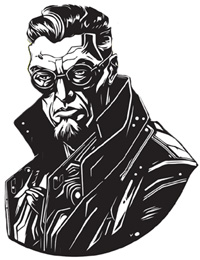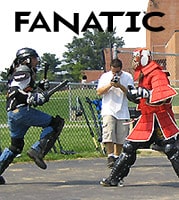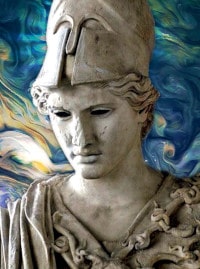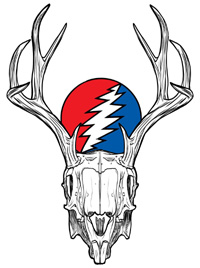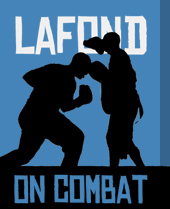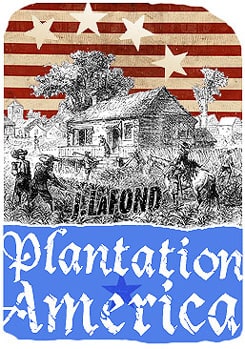The Iron Dragon:
Richard Bustillo
David & Kevin Lumsden
Xlibris, 2010, 259 pages
A review by James LaFond from June 2012
Nine years ago I met Richard Bustillo at a seminar hosted by the future authors of this, his biography. David had confided in me that they were considering doing their teacher’s biography. They also introduced me to their teacher as a published author. A lot of my work has been biographical, if fragmented in presentation. Immediately upon meeting Mister Bustillo I knew that the Lumsden brothers were in for a hard piece of work.
You see, Richard Bustillo is modest to a fault, seems to have purged whatever ego he might have had as a young man, and is clearly more interested in everyone he meets and what they do, than he is in himself and what he has done. In other words, from a biographer’s point-of-view, this man is a pain-in-the-literary-ass to write about.
David occasionally updated me on the progress of the work, which included a scumbag martial arts publisher literally holding the manuscript hostage for a year while lawyers pried it from his greedy paws, as well as interviews with people from across the country, in an attempt to shed light on the life of their publicly private subject.
The challenge to writing a biography is twofold; achieving transparency, which is made more difficult if you are involved with the subject; and the achievement of depth and breadth in a single work, which is always made very difficult when the subject is either alive and modest [like Richard Bustillo] or dead and protected by his inheritors [like Bruce Lee].
So, the Lumsden brothers had [as writer/researchers] a hard way to go. The resulting book has been well-received by the ‘Jeet Kune Do Community’. Now I must decide how to categorize this book before I review it.
This is an authorized biography. When a celebrity authorizes a biography it immediately becomes two things: loved by fans and scorned by critics. Now, I am not privy—indeed did not inquire of the authors—to the level of influence exercised over this project by the subject. From my reading I will venture a guess that Richard Bustillo steered the authors away from himself and toward what he is passionate about, namely the art he shares with others. This work is focused on the specific philosophical martial arts fraternity known as the ‘Jeet Kune Do Community’, as seen through the mind’s eye of one of the eminent pioneers of this movement.
The ‘Jeet Kune Do Community’ may be described as a philosophic/experiential cult, not unlike the circles of devotees that once gravitated to the schools of the ancient Greek philosophers such as Plato and Pythagoras. The founder of this community was Bruce Lee, far and away the most influential martial artist of the 20th Century; an enigmatic, and actually worshipped person who was possessed of intense insight and extreme charisma. Richard Bustillo was one of the two primary preservers and cultivators of Bruce Lee’s message to the martial arts world.
For the Lumsdens the greatest challenge they faced as biographers was to shift the focus from Lee to Bustillo, which does not apparently seem possible. Once this realization hits the reader the book then becomes a tool for understanding Lee’s and Bustillo’s legacy and following. Read for that purpose it reveals itself as very well-documented, well-written and possessed of an outward-looking perspective. This isn’t a hide-bound introspective look within, so much as an invitation to join this fraternity of intellectual martial artists in their search for enlightenment and expression.
As a martial arts researcher my favorite chapter was Round Five: the Filipino Kali Academy, which details Bustillo’s and Inosanto’s investigation into their own Filipino martial heritage, at the dawn of contact weaponry study in the United States.
As an avid reader on the birth and fate of social organisms [usually referred to as institutions] I would have to say that Round Four: This Time With Meaning, was well-done to the point that it gave me a chill down my spine, as I definitively realized that I was reading about a religious experience. I am well-aware that the authors and the subject will probably disagree, but I walked away from that chapter convinced that I was reading a record of the birth of a modern religious movement.
As someone who has been involved with a number of failing and successful martial arts schools I would have to cite Round Six: IMB [International Martial Arts & Boxing], Past, Present, Future as the best model for an authentic and commercially successful martial arts school possible. The authors did an excellent job describing the school and its operation, particularly their use of third-party sources. The book takes off here, on page 113, with a quote from Bustillo on teaching.
As a reader Round Eight: So You Think You Can Fight? and Round Nine: Man of Action, were the most rewarding portions of the book, its biographical heart. This reveals the cagy elder coach that I met that day in the gymnasium of a Catholic High School as he took the time to extract whatever useful information he could from someone much less knowledgeable than himself.
I gave this book a 4 out of 5-star rating because the authors didn’t find a way to escape the looming shadow of Bruce Lee. However, if you are a Bruce Lee fan that’s not a problem.


